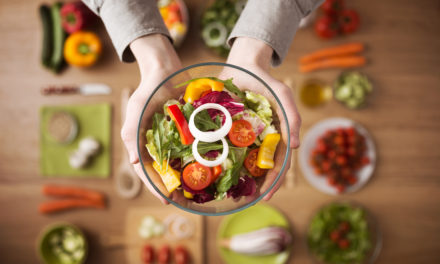9 facts about fiber
If you’ve been looking for a way towards a high octane diet, you’ll find fiber to be exactly what you need.
Even though research has shown fiber to be powerful, many people aren’t taking this nutrient seriously.
What are fibers?
Fibers originate from the cell wall of plants and are therefore found in plant products, such as whole-grain products, vegetables, and fruits. Our small intestine cannot digest these plant particles, so they end up in the large intestine.
The two main types of fiber are soluble and insoluble fiber. Many fiber-rich foods contain some of both. Both forms of fiber have health benefits.
– Soluble fiber dissolves in water and gastrointestinal fluids when it enters the stomach and intestines. It is transformed into a gel-like substance, which is digested by bacteria in the large intestine, releasing gases and a few calories.
– Insoluble fiber does not dissolve in water or gastrointestinal fluids and remains more or less unchanged as it moves through the digestive tract. Because it is not digested at all, insoluble fiber is not a source of calories. (source)
For adults, the advice is to consume about 30 grams of dietary fiber per day.

Fibers are in:
-
Whole-grain carbohydrates
Quinoa, brown rice, whole-wheat pasta, sweet potatoes
-
Vegetables
Some high fiber vegetables include: Artichoke, beets, kale, broccoli, spinach, carrot
-
Fruit
Strawberries, apple, avocado, banana, blackberry, raspberry, pear
-
Legumes
Peas, kidney beans, chickpeas, lentils
-
Nuts and seeds
Almonds, chia seeds, flax seeds, pistachios, walnuts
-
Bread and cereal
Oatmeal rye bread, whole wheat bread

Here are 9 facts to help you fuel your health with fiber
- Fiber fights diseases. High fiber helps the body to eliminate cholesterol by binding it in the digestive tract. For thousands of years, fiber has been used to stop constipation. Many studies have found that people on diets high in fiber have reduced risks of certain diseases such as cancers, coronary heart disease, obesity and possibly diabetes (source)
- Fiber can actually help with overeating. All high fiber foods will take longer to chew and digest, making you feel satisfied longer
- Most popular foods don’t have enough fiber. If you like the more popular foods, you probably need to increase your intake of fiber. Foods low on fiber are for example white bread, white rice, white flour, plain white pasta, fruit or vegetable juice without pulp,…
- Grains offer the most fiber. The best sources are whole grains and concentrated grain products.
- Kids need fiber as well. Children that are older than 2 years of age should consume a daily intake of fiber. The latest recommendations are that kids should eat about 14g of fiber for every 1,000 calories they consume.
- More fiber needs more water. In order to keep fiber moving through your digestive tract, you’ll need to consume a lot of water. With your diet of fiber, you’ll need eight or more glasses of water every day.
- Fiber cannot be cooked out. When you cook your fruits and vegetables, don’t worry about cooking the fiber out, as it stays. The fiber found in fruits and vegetables isn’t just in the skin or in the peel.
- do not overdo your fiber intake. If you eat more than 50 grams of fiber in a day, you can get diarrhea and bloating, which can interfere with your body’s absorption of other key minerals. The total dietary fiber intake from food should be 25 to 30 grams a day.
- Even though you may think so, getting the amount of fiber you need isn’t very hard to do. All you have to do is eat the right foods and you’ll be well on your way to a fiber-rich lifestyle.
Even though you may think so, getting the amount of fiber you need isn’t very hard to do. All you have to do is eat the right foods and you’ll be well on your way to a fiber-rich lifestyle.














0 Comments
Trackbacks/Pingbacks